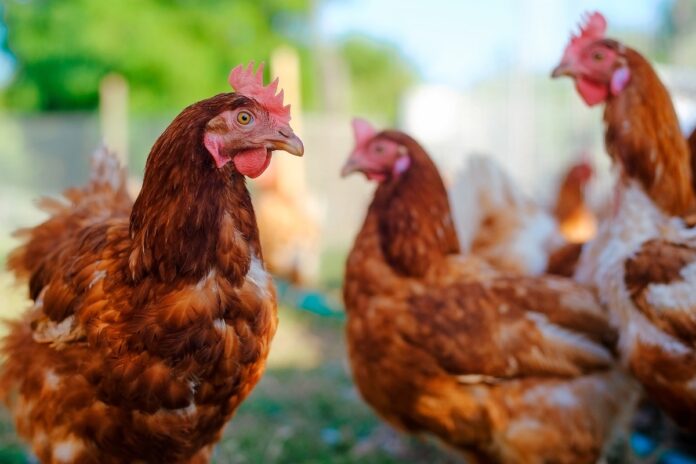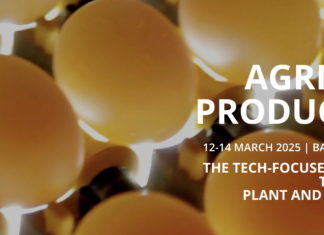
South Africa’s imports of poultry products have been on the decline since 2019 as the country reviewed its import tariffs upwards and enforced the antidumping duty policy.
The imports dropped by 10% to 485,543 tonnes in 2020 from 539,567 tons in 2019 before declining further in 2021 when the volumes came down by 11% to 432,307 tonnes, nearly 20.2% below the 5-year average from 2016–2020 according to the South African Poultry Association (SAPA). However, SAPA says, increasing of the import tariffs by South African government will have minimal impact on the deteriorating profit levels for the country’s poultry industry due to the increasing cost of raw materials in the production of poultry feed.
SAPA is urging the South African government to instead focus on measures that would reduce the price of maize (corn) and soybean, the two key ingredients in the manufacturing of poultry feed instead of increasing the import tariffs on poultry products.
“The price of maize and soya has increased by almost 20% since April 2021 and the rise is mainly responsible for the increase of chicken products in-store,” says Mr Izaak Breitenbach, SAPA’s chief executive officer. He says the increase in the price of chicken in South Africa has also been fueled by “several factors such as transport and fuel price increases, inflation, food and commodity shortages, global conflicts, and increment of feed prices.”
SAPA is not advocating for removal of import tariffs for poultry products completely as it admits the payable duties “are not only necessary but crucial to protect the local poultry industry from predatory dumping practices which in the long-term lead to job losses within our South African poultry industry.”
Mr Breitenbach says the import tariffs on poultry product: “plays an insignificant role in the price of chicken products and in fact protect the local industry from predatory poultry dumping practices”.
Currently, SAPA says in one of its previous reports, there are also other factors influencing the high cost of raw material for production of poultry feeds such as “the ongoing conflict in Ukraine, making unable to export maize and soya, also contributes to increments in price as our prices are based on world market prices.”
In the last couple of years, the South African Poultry industry has gone through a difficult time and this “especially with regard to issues such as the illegal dumping of poultry products,” according to SAPA. “Dumping, in our context, happens when products are sold in South Africa at a lower price than it would be sold for in the country these product originates from,” the Association’s report says. “This has a devastating effect on our local poultry industry and farmes by undercutting local producers and leading to job losses within the industry and a lack of reinvestment.”
SAPA’s campaign to have the South African government focus on reducing the cost of maize and soybean in addressing the spiraling cost of poultry feeds, has come at a time when the country has announced an upward revision of its most-favored nation (MFN) duties on specific poultry products.
The upward review of the MFN, a global trade practice that ensures non-discriminatory trade between all partner countries of the WTO including provision of concessions, privileges, and immunity in trade agreements, took effect on March 13, 2020, nearly a year after South Africa’s International Trade Administration Commission (ITAC) initiated investigation into the structure of these duties at the request of SAPA.
Although the USA, Brazil and the European Union are the most affected by the review of the MFN duties due to their status as leading exporters of poultry products to South Africa, the EU will not be subject to these increase due to Bloc’s tariff free market access established under the Economic Partnership Agreement (EPA) between the Southern Africa Development Community (SADC) according to an earlier report on South Africa poultry industry by the US Department of Agriculture (USDA).
The EPA provides a wide range of safeguards with signatory countries having an option to activate safety options and increase import duty should the imports from the EU increase to a level threatening local production.
South Africa, which has experienced steady growth in demand for bone-in chicken than breast portions, had previously signed with the EU the European Union Economic Partnership Agreement that exempts the trading bloc from import duties on all poultry products.
The EU has a better chance of increasing its share of exports to South Africa after the country removed the four-year ban imposed in 2016 on poultry imports from the Netherlands that was due to the Highly Pathogenic Avian Influenza (HPAI). Previously, the Netherlands was the second largest exporter of chicken meat and products to South Africa.
For South Africa, the new MFN duties on imports of bone-in chicken has been increased from 37% to 62% while that on boneless portions went up from 12% to 42%. SAPA had earlier proposed, in its application to ITAC, an increase in the general rate of customs duty on bone-in chicken portions from 37% ad valorem to 82%. In addition, SAPA sought for government intervention to have the existing duty of 12% ad valorem on boneless chicken cuts increased to 82% as well, which is South Africa’s bound duty rate under the World Trade Organization (WTO).
SAPA’s application was motivated by what it terms are “enormous profitability challenges” facing the Southern African Customs Union (SACU) and resultig in downsizing of the industry in late 2016 and early 2017, “resulting in job losses and a deterioration in SACU’s food security position.” SACU is a customs union among five countries which are Botswana, Eswatini, Lesotho, Namibia and South Africa. “The profitability challenges experienced by the SACU poultry industry are directly linked to the increasing volumes of opportunistic imports of frozen chicken which significantly undercut the SACU industry,” SAPA had said previously.
SAPA argued the low-priced imports, which account for close to one-third of South Africa’s consumption of chicken meat, have potential to limit the poultry industry of the SACU members from increasing prices “in line with the increases in costs and reduce sales volumes and market share as there is a preference for the lower priced imports.”
For the last six years, the U.S. has exported a large share of its poultry exports to South Africa under a tariff rate quota (TRQ) that was initially set at 65,000 metric tons according to SAPA.
The TRQ applies to bone-in chicken portions only and has increased to 68,590 metric tons. Nonetheless, South Africa imposes antidumping duty of US$0.61/kg, which was initially put into place in 2000, for exports above 68,590 metric tons. The 2020 increase in import duty on poultry products is the first made by South Africa since August 2013 when ITAC had recommended an increase of import duty on five poultry products including whole bird, carcasses, boneless cuts, bone-in and offal causing ripple effects on the Brazilian poultry market with the U.S. escaping the impact since it was not exporting to South Africa due to the antidumping duty and absence of the TRQ according to USDA.
The road to the review and subsequent increase in MFN duties in South Africa commenced in the last quarter of 2018 when ITAC published a notice in the government Gazette confirming the submission for consideration an application from SAPA for an increase “in the most favoured nation rate of customs duties on frozen meat and edible offal of fowls Gallus domesticus.”
South Africa’s tariff review on poultry import duties is partly based on the Poultry Sector Master Plan, which was agreed on and signed by the government and the poultry industry stakeholders such as SAPA in the 4th quarter of 2019.
















